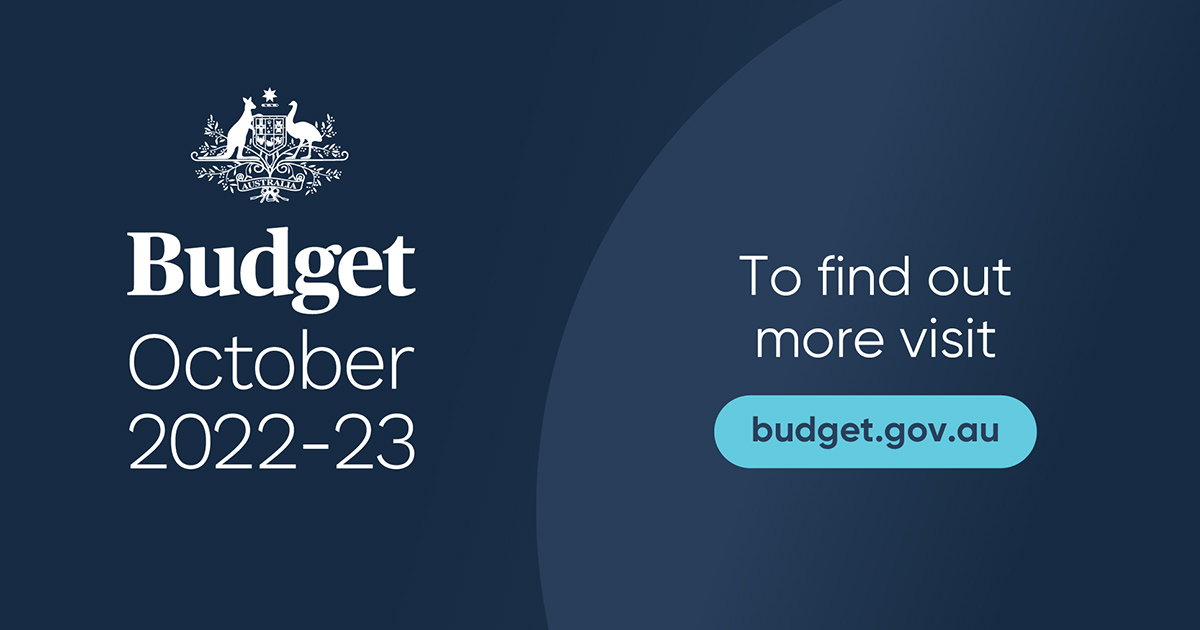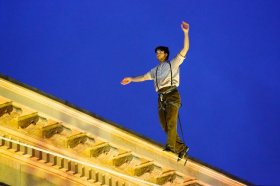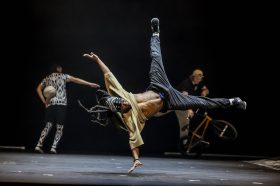There’s a clear key message in last night’s Budget: Australia’s new government is happy to risk being boring if it means ending the contest over which party is the better economic manager. Treasurer Jim Chalmers has prioritised drastically reducing the inherited deficit over investing to safeguard the most vulnerable people in a period of great uncertainty.
With another Federal Budget due in just over half a year, it’s a relatively safe time to prioritise deficit reduction – well, safe-ish; anyone trying to get by on unemployment support knows that $40-something a day is woeful, creating far more problems than it actually redresses.
Let’s look at three elements of the Federal Budget’s impacts on arts and culture – First Nations, youth, and election commitments – and then, let’s briefly put these commitments in their broader economic and political context.
First Nations first
The Treasurer began his speech by acknowledging Country: not just ‘the Ngunnawal and Ngambri lands of Canberra’ – thus helping to end the situation where the Commonwealth tends to recognise the Ngambri while the ACT Government recognises the Ngunnawal – but also ‘the Yagara and Yugambeh lands of Logan,’ his own electorate, and then Aboriginal and Torres Strait Islander Country ‘all around Australia’. As well as honouring Elders, he recommitted to the implementation of ‘a Voice for First Nations people’.
Honouring election promises, the Budget commits:
- $5 million to the National Aboriginal and Islander Skills Development Association NAISDA Dance College, the Aboriginal and Torres Strait Islander arts and dance training organisation based in regional NSW
- $0.6 million over three years to the Six Rivers Aboriginal Corporation towards Tiagarra, the Tasmanian Aboriginal Cultural Centre and Keeping Places, and
- $5.8 million over three years to begin the work of establishing the independent Makarrata Commission that will oversee processes for agreement-making and truth-telling, as part of the overall $27.7 million election commitment towards the Makarrata Commission’s work.
Office for Youth
Back in the days of the Hawke Government, the Office for Youth was a powerful little outfit. Its legacy includes investing in the establishment of national youth arts organisations such as Express Media and Next Wave. Abolished, and then later reintroduced by the Rudd Government (by now we’re seeing a pattern), a new Office for Youth has been committed to in last night’s Budget.
The promised $10.5 million over four years, and $2.9 million per year permanently, will implement ‘a new youth engagement model to enable young Australians to influence the policies and programs that affect them’.
Read: Slamming shut a window of possibility: youth theatre in crisis
Led by young people, the Office for Youth will ‘improve and harmonise youth policy outcomes across government … [to] embed the diversity of youth voices in policy and program design on an ongoing basis’.
Given the long-term devastation that successive budgets have wreaked on young, emerging and experimental arts, a whole-of-government approach to youth policy and investment is welcome – and urgently needed. As with the National Cultural Policy, the challenge will be to ensure that these strategic initiatives can withstand political change for the benefit of all Australians.
Arts focus? Election commitments only
Again, it’s only election commitments that are enumerated in last night’s Budget; Minister for the Arts Tony Burke has consistently focused our expectations on the comprehensive National Cultural Policy development and not immediate gestures. Last night’s revised 2022-2023 Budget commits:
- $15.3 million over three years for the Australia Council – not new funds towards grants programs, but savings projected from the merging of Creative Partnerships Australia into its operations
- $83.7 million over four years for the ABC – reversing the pause in annual indexation, $1 million over two years to investigate the feasibility of relocating SBS from Artarmon to culturally diverse Western Sydney and five-year funding terms for both the national broadcasters to be implemented from 1 July 2023
- $22 million for the Live Performance Support Fund to redress the pandemic’s impacts on eligible live event organisers
- $7.4 million towards Bundanon and NIDA
- $2.4 million over four years, and $1 million a year thereafter, towards the national performing arts training organisations (in addition to NAISDA’s $5 million)
- extending the Temporary Interruption Fund until 30 June 2023, paid for by redirecting existing funds such as RISE
- fee-free TAFE – and while arts programs have closed at TAFEs all over Australia and especially regionally, further focus will be required here; as a savings measure, the Government is ending the 10% discount when upfront HECS/HELP repayments are made, extending the debt burden, and
- initiatives such as getting 660,000 regional Australian homes connected to the NBN (to the home, not the node!) will have a transformative impact on regional arts and culture.
Putting the politics in context
Last night’s strong focus on reducing the deficit only raises our expectations for next May’s 2023-2024 Budget, where significant structural reforms and cost of living measures will be vital, as well as investment in what keeps Australian arts and culture thriving – and its artists and workers working.
Of course, that investment will come at a critical time in Australia’s history, given the political and economic instability the world is facing. So how have the nation’s leading political and economic journalists focused their responses?
In Guardian Australia, Sarah Martin details the Treasurer’s restraint in the face of uncertainty. Labor has delivered a ‘no surprises budget’, writes Katharine Murphy, with just ‘a plan for a plan’ around social and affordable housing, for example – because ‘being crazy brave… can get you killed’ politically.
Read: National Cultural Policy: the Remake
In the Australian Financial Review, Tom McIlroy looks at realigning infrastructure investment, cutting wasteful spending, and enforcing tax compliance – a comprehensive look at what’s most boringly important in this Budget.
And Laura Tingle for the ABC wonders how prepared we will be for the ‘inevitable car crash coming’ if the Government doesn’t make successful long-term structural change to the Budget. Perhaps last night’s Budget revision is not so safe-ish after all.
It’s timely, then, that a new approach to planning and understanding budgets has begun to be implemented as of this Budget.
‘Measuring what Matters’ starts to consider wellbeing elements, taking a global survey of other nations and key bodies such as the OECD.
Currently Australia ranks at or below average on OECD indicators such as ‘gender parity in politics’, ‘long hours in paid work’, and ‘trust in government’. Seeing these indicators set out in the Budget Papers is an important step forward: the Australian Government has recorded its intention to develop a uniquely Australian framework based on international benchmarking.
Hopefully, this will mean that future budgets won’t be able to get away with being boring; we’ll all be judging by a lot more than numbers alone!
It’s here that the National Cultural Policy work takes central importance: to promote wellbeing for everyone, we’ll need to ensure that policy and investment enriches our creative and cultural lives, in ways that only arts and culture can achieve.





